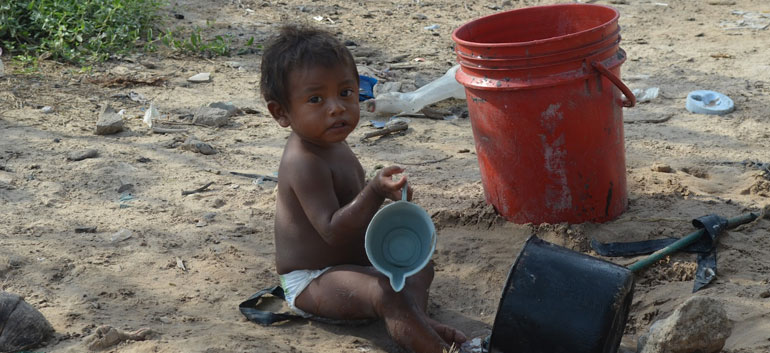A study into the well-being of the children of Colombia’s ethnic minority groups has found that 70% of the country’s indigenous children are chronically malnourished and one in four children from ethnic minorities dies before the age of six due to malnutrition and lack of access to healthcare.
The study by Colombia’s National Administrative Department on Statistics (DANE), published last week, also revealed that as a result of malnutrition 60% of indigenous children are born and raised underweight.
The Pandi Communications Agency, which specializes in children’s issues at DANE, said that 5.7 million people belong to Colombia’s diverse ethnic groups (Palenquero, Afro-Colombian, Raizal, Providencia, Gypsy, and indigenous). Of these, 1.4 million are indigenous Colombians, corresponding to 3.4 % of the total population.
“The humanitarian situation for ethnic groups is critical, especially in the indigenous population. Children and women have been the worst affected for a long time,” said Hernan Quintero, manager of a children’s program at the International Organization for Migrations (IOM).
Colombia’s Constitutional Court has identified 34 of the country’s 102 indigenous groups as being at risk of extinction. The Indigenous Organization of Colombia (ONIC) has identified a further 32, meaning that up to 66 groups are at risk.
MORE: 890,000 indigenous Colombians at risk of extinction
The study also points out that indigenous children have been particularly harmed by Colombia’s 49-year armed conflict, as well as describing the types of violence that are prevalent in indigenous communities in the social, cultural and family settings. It also cites issues affecting the population relating to “social exclusion, racism, domestic violence, malnutrition, sexual abuse, the high mortality rate, lack of attention from the State, discrimination and forced displacement.”
One such example of that displacement is the Nonam indigenous community who live in the humanitarian and biodiversity zone of Santa Rosa de Guayacan. They were displaced in 2010 as a result of fighting between rival armed groups and fled to the nearest city, Buenaventura.
In Buenaventura the community lived in cramped conditions, often with no running water or electricity and developed health problems – there were five cases of tuberculosis and two girls died in hospital due to insufficient medical attention. In 2011 they were able to return to their land with the help of the Justice and Peace Commission, but still face problems arising from the presence of armed groups and encroachment by multinational business interests.
Sources
- La niñez indígena, en riesgo de desaparecer (El Tiempo)
- El 70% de la niñez indígena sufre de desnutrición crónica (El Universal)
- Visit to Nonam Community with Witness for Peace and interviews with the Justice and Peace Commission


